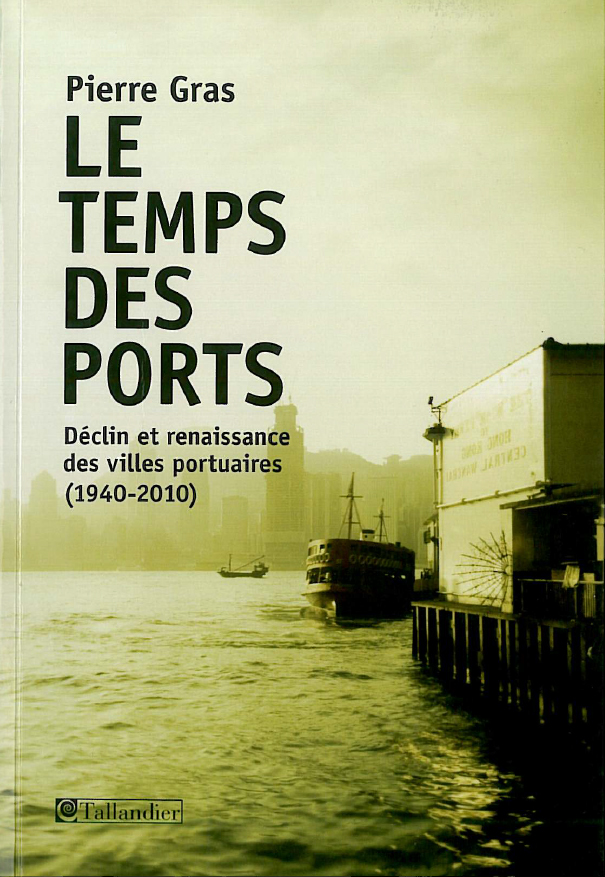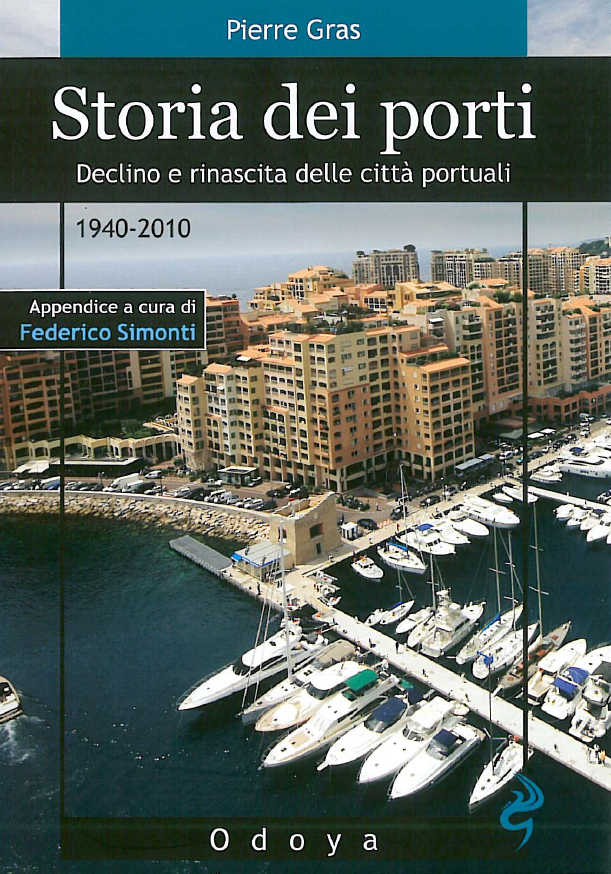Sometimes luck smiles on you and you are offered a twofold opportunity. Such luck came my way when I was introduced to the book Le temps des ports. Déclin et renaissance des villes portuaires(1940-2010), which was written by Pierre Gras and published in Paris in 2010 by Éditions Tallandier and has just recently been published again in Italy by Odoya under the title Storia dei porti. Declino e rinascita delle città portuali (1940-2010).
This work begins with an introduction, followed by fifteen chapters divided into three parts and an interesting conclusion in which different viewpoints are considered. It ends with four sections comprising notes, a glossary, references and an index of the places mentioned in the book. The French edition, which has a more evocative and refined title, is austere and thought provoking. The Italian edition also includes photographic documentation comprising mainly black and white photographs which enhance the text and are of great interest, although it is the story itself which is of most interest.
The first part of the book tells the contemporary history of the port cities. The author begins by analyzing the worldwide collapse brought on by the world war, in which the ports of the countries in conflict were almost all destroyed. The forties was a decade of far reaching changes and the author analyses the paradoxes and the different ways in which the reconstruction work was undertaken. This was a period of great changes in faraway colonies of Western countries, which led to the downturn of the large industrial ports. Following the rebuilding of several ports and cities in Asia and Africa after the war and until 1965, the resulting decolonization led to the emergence of several larger spaces, while there was a significant loss of traffic in large industrial ports in the United Kingdom and France. Containerization systems were developed leading to globalization and a worldwide boom in international trade between 1985 and 2010, as a result of concentration of fleets and new strategies. Globalization began to take shape and expand in the eighties. Port terminals became more specialized and the transport revolution was underway. In addition to being a catalyst and driving force, containerization evidenced the economic and technological changes taking place in a world in which there was continually increasing privatization in the area of ports.
The second part of the book examines different geographical areas as port destinations: the Mediterranean, the Northern Range, the Atlantic, Asian horizons and the emerging African world. The author looks at ports on both the northern and southern shore of the Mediterranean, as well as the long-term Hanseatic influence – Rotterdam, Hamburg, Antwerp, and the Baltic ports, all of which were linked to areas of high economic and demographic concentration. The author then moves on to American ports in the south and the giant north, with its three faces: the Atlantic, the Pacific and the Gulf of Mexico. Singapore, Hong Kong, Shanghai and the remainder of the Chinese port system and Japanese ports take on a new position of dominance evidencing the strength of an economic world power. The author concludes by analyzing African growth, the power of the Bolloré group, the Congo, Cameroon, Nigeria, countries and ports in the East, West and South in continual growth.
The third part of the book concentrates on the restructuring of port cities, reflecting on those responsible for the future.
After synthesizing the three generations of change: the sixties, the seventies and the eighties, he continues from the nineties and beyond, addressing the new functions of port cities, the core value of the recovery of cultural heritage, as well as the special case of the Venice and Asian experiences. The following chapter “From major facilities to major events” focuses on the evolution of developments beginning in the eighties (Bilbao, Cherburgo, Cardiff, etc.) which gave way to a new kind of politics. The chapter ends with an in-depth analysis of the case of Geneva, concluding with two sections aimed at analyzing what the future will bring. Whether it be ports without a city or territories in which the main aim is sustainability, sustainable development permeates these new developments and management systems, giving rise to modern port designs, constant dialogue in the management of projects and noteworthy examples of work well done such as Santander and Corgone.
The final chapter presents future prospects, outlining three risks faced by ports worldwide, which are now at a crossroads: economic and environmental risks, as well as the risk relating to exaggerated security, which could even lead to militarization of maritime transport. According to Pierre Gras, these risks are countered by the possibility of rebalancing through the cooperation of agents at each port and the ports themselves. Port city activities need to be diversified while upholding the three main pillars of sustainable development: environmental protection, economic balance and social equity for the benefit of future generations. In the context of globalization, with the resulting homogenization of cities, the port cities aiming to be sustainable in the future require an improvement of both their environmental and social development as well as the recovery of maritime heritage.
Added to the Italian edition is a small eight page appendix by Federico Simonti briefly narrating the history of the city and port of Livorno.
With a focus on European ports, which are constantly counterpointed with U.S. ports, in addition to an analysis of the particular case of Asia, this is a book whose French and Italian editions trace contemporary history, thought and economics. It is a book which provokes reflection and provides documentation for the analysis of the evolution of ports and their cities, a book offering both an expert opinion and valuable documentation.
[one_half]
[/one_half]
[one_half_last]
Title:
Le temps des ports. Décline et renaissance des villes portuaires (1940-2010)
Author:
Pierre Gras
Year:
2010
Éditions Tallandier, Paris, 2010, 298 pp.
ISBN: 978-2-84734-675-6
[/one_half_last]
[one_half]
[/one_half]
[one_half_last]
Title:
Storia dei porti. Declino e rinascita delle città portuali (1940-2010)
Author:
Pierre Gras
Appendice Federico Simonti
Year:
2013
Odoya, Bologna, 2013, 335 pp.
ISBN: 978-88-6288-187-6.
[/one_half_last]

